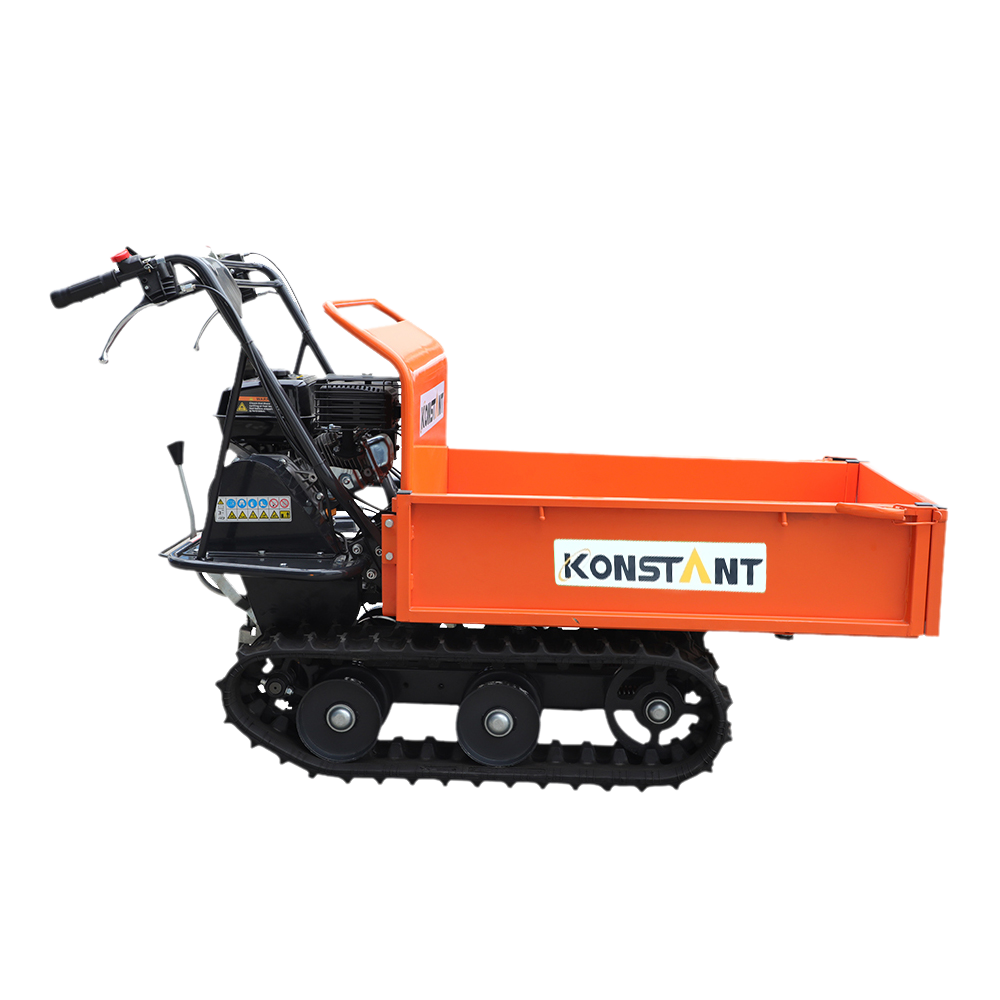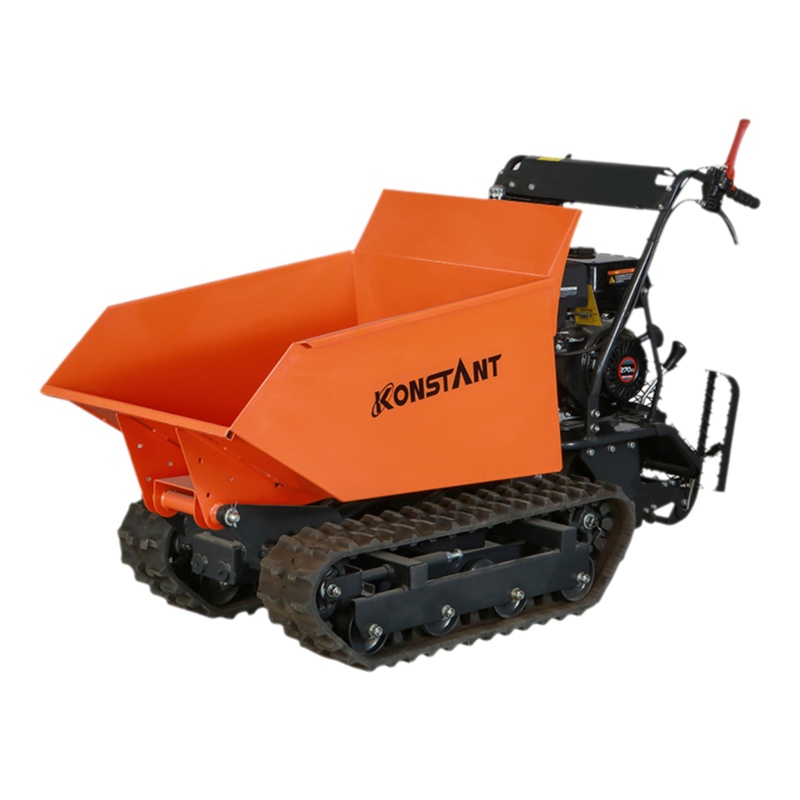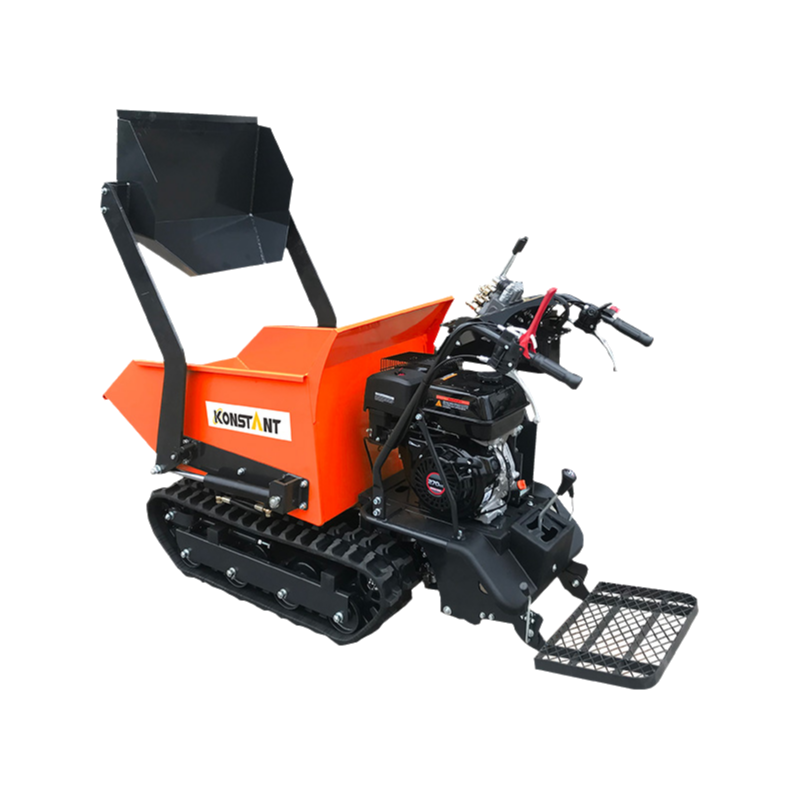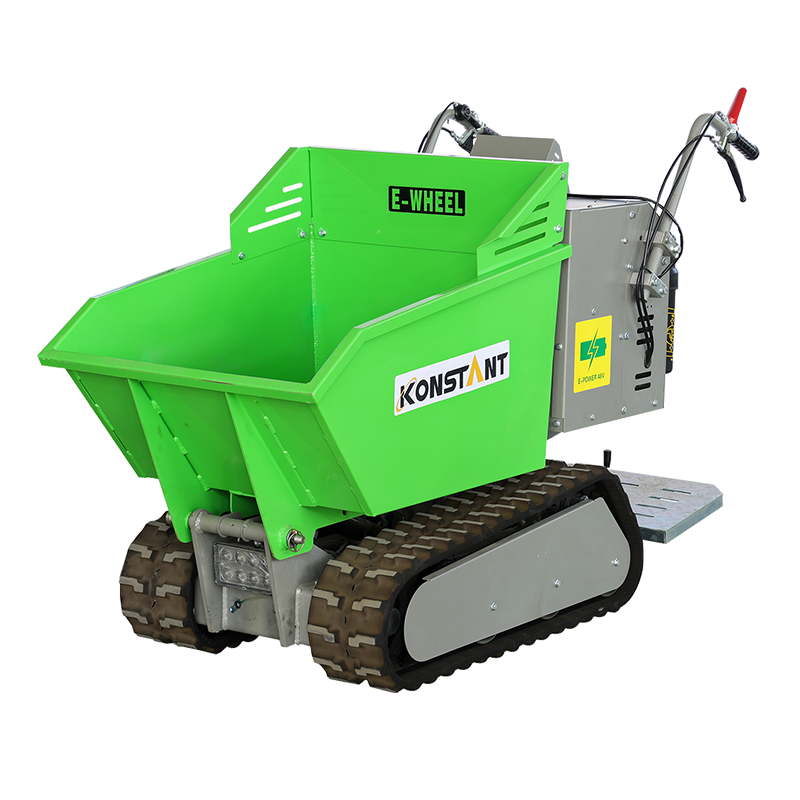Provide you with the latest enterprise and industry news
How Do Electric Garden Loaders Improve Yard Work
Posted by Admin
How Electric Garden Loaders Improve Efficiency in Yard Work
Electric Garden Loaders are transforming the way homeowners and landscaping professionals handle outdoor tasks. By providing reliable support for moving soil, mulch, stones, and other materials, these machines reduce manual effort and speed up completion times for a wide range of yard projects. Understanding how electric models enhance efficiency can help users choose the right equipment for their garden needs.
Reduced Physical Strain
Manual transportation of heavy materials can be exhausting and go to fatigue or injury over time. Electric loaders minimize the need for lifting, bending, and carrying, allowing users to maintain energy throughout longer gardening sessions. Consistent use reduces back strain and enhances safety, particularly for those managing larger yards or multiple tasks at once.
Quieter and Cleaner Operation
Unlike traditional fuel-powered machines, electric loaders operate with minimal noise and zero emissions. This makes them suitable for residential areas and reduces environmental impact. Quieter operation also allows work to continue without disturbing neighbors, while maintaining a cleaner workspace with less exhaust residue or fuel handling.
Precise Load Handling
Electric models often include adjustable load mechanisms, tilt functions, or hydraulic support, making it easier to move materials with accuracy. Whether transporting soil to planting beds or shifting mulch around flower borders, these features reduce spillage and wasted effort. Efficient load control saves time and ensures materials are positioned exactly where needed.
Consistent Performance Across Tasks
Electric loaders maintain steady power throughout operations, providing uniform movement even on uneven terrain or inclines. This consistency allows users to complete repetitive tasks quickly without fatigue or slowdown, supporting projects like leveling soil, clearing debris, or moving stones for hardscaping.
Enhanced Safety and Control
Modern electric units include safety features such as stable platforms, balanced wheels, and easy-to-use controls. These improvements reduce the risk of tipping, slipping, or accidental damage to the yard. Homeowners and landscapers benefit from machines that provide controlled, predictable movement for all types of yard work.
Year-Round Utility
Electric loaders are designed to function in various conditions, from dry soil to slightly damp environments. Some models can be adjusted for traction or stability depending on the season, allowing for continued use in spring planting, summer maintenance, and fall cleanup. This versatility ensures that a single machine can handle multiple gardening needs throughout the year.
Simplified Maintenance
Compared to fuel-powered equipment, electric loaders require less maintenance. There is no need for fuel storage, oil changes, or spark plug checks. Accessible components, battery management systems, and modular designs make cleaning and inspection straightforward, supporting long-term performance and reliability.
Electric Garden Loaders offer a practical solution for efficient, safe, and environmentally conscious yard work. By reducing physical strain, improving load handling, and providing reliable, year-round operation, these machines help homeowners and landscapers complete tasks faster and with less effort. Choosing the right model ensures both convenience and durability, making outdoor maintenance more manageable and productive.
What to Know Before Buying an Electric Garden Loader
Investing in an Electric Garden Loader can greatly improve the efficiency and safety of yard work. Before making a purchase, it is important to understand the factors that affect performance, suitability, and long-term reliability. Careful consideration ensures that the chosen machine matches the specific needs of your garden and tasks.
Assess Your Yard Size and Layout
The step is evaluating the area where the equipment will be used. Narrow pathways, uneven terrain, slopes, or obstacles influence the type of loader needed. Compact designs are ideal for smaller gardens, while larger models may be required for extensive yards. Understanding the layout prevents maneuverability issues and helps protect plants, pathways, and structures from accidental damage.
Determine Material and Load Requirements
Consider the types and weight of materials you will move regularly, such as soil, mulch, compost, or stones. Machines with adjustable load functions or tilting mechanisms can make transport more precise and reduce physical strain. Ensuring the loader can safely manage typical loads avoids tipping risks and ensures smoother operation.
Evaluate Power Options
Electric loaders come with various power sources, including battery-operated and plug-in designs. Battery models offer flexibility without cords, while plug-in units may provide continuous operation for longer tasks. Consider factors such as usage frequency, yard size, and environmental impact when selecting a power source. Energy-efficient models also reduce noise and emissions compared to fuel-powered alternatives.
Check Build Quality and Safety Features
Durable construction is essential for long-lasting performance. Look for reinforced frames, corrosion-resistant materials, and reliable fasteners. Safety features such as stable platforms, secure handles, anti-slip surfaces, and emergency stops help prevent accidents during operation. A well-built loader enhances both user confidence and task efficiency.
Consider Maneuverability and Controls
Ease of handling is critical, especially for those without prior experience. Smooth steering, responsive brakes, and ergonomic controls make tasks simpler and more comfortable. Some machines offer adjustable handles or modular attachments, allowing users to adapt the loader for different tasks and terrain types.
Maintenance and Accessibility
Simple maintenance ensures consistent performance. Choose models that allow easy access to moving parts, battery compartments, and hydraulic components. Accessible designs make cleaning, inspections, and lubrication straightforward, reducing downtime and prolonging equipment life.
Seasonal and Environmental Factors
Consider how the loader performs in varying weather conditions. Machines designed for wet soil, moderate snow, or slippery surfaces offer year-round utility. Moisture-resistant materials and protective coatings prevent corrosion and maintain stability, ensuring reliable performance regardless of seasonal challenges.
Knowing the layout of your yard, understanding load requirements, evaluating power systems, and considering durability, safety, and maintenance are key steps before buying an Electric Garden Loader. Making an informed decision improves task efficiency, reduces physical effort, and supports long-term reliability, making outdoor projects safer and more manageable.
Why Electric Garden Loaders Are Becoming Popular Among Homeowners
Electric garden loaders have grown in popularity among homeowners due to their ability to simplify outdoor tasks while offering efficient, environmentally conscious operation. These machines are increasingly seen as practical solutions for both small and medium-sized yards, enabling users to complete landscaping, gardening, and maintenance tasks with less effort and time.
Reduced Physical Effort
One of the main reasons for their popularity is the reduction of manual labor. Electric loaders allow homeowners to move soil, mulch, stones, or garden debris without heavy lifting. This helps prevent fatigue and potential strain injuries, making yard work more accessible for users of different ages and fitness levels.
Efficiency in Yard Management
Electric loaders streamline tasks that would otherwise require multiple trips or manual handling. With smooth load transfer, tilting mechanisms, and modular designs, materials can be moved and placed with precision. This efficiency translates into quicker project completion and allows homeowners to focus on landscaping creativity rather than labor-intensive chores.
Environmentally Friendly Operation
Battery-powered or plug-in loaders produce minimal noise and do not emit harmful fumes, unlike fuel-based alternatives. Homeowners increasingly prefer equipment that reduces carbon footprints and supports eco-friendly practices, especially in residential areas where air quality and noise levels are concerns.
Versatility Across Tasks
Modern electric loaders are designed to handle various materials, from soil and compost to mulch or small stones. Adjustable trays, tilt functions, and modular attachments make these machines suitable for different gardening and landscaping activities throughout the year. Seasonal adaptability further enhances their appeal to homeowners who need year-round functionality.
Safety and Stability
Safety is a key factor in adoption. Electric loaders offer stable platforms, balanced weight distribution, anti-slip features, and easy-to-use controls, which reduce the risk of accidents. For homeowners, knowing that the equipment is safe to operate encourages more frequent use and allows families to manage yard tasks without concern.
Maintenance Convenience
These machines are generally easier to maintain than fuel-powered alternatives. Accessible components, simple battery charging, and fewer moving parts reduce the need for specialized tools or frequent servicing. Homeowners can rely on consistent performance with minimal intervention, which adds to the overall appeal.
Practical Investment for Long-Term Use
Although initial costs may be higher than traditional wheelbarrows or manual tools, electric loaders provide long-term value. Reduced labor, increased efficiency, and durable construction make them a cost-effective choice over time. Homeowners also benefit from improved consistency in garden care, preserving soil structure and protecting plants and landscaping features.
The rising popularity of electric garden loaders among homeowners is driven by their ability to reduce physical effort, increase task efficiency, support environmentally friendly practices, and ensure safety and reliability. By offering versatility, low maintenance, and year-round usability, these machines have become practical tools for modern yard management.

 English
English русский
русский Français
Français Español
Español Deutsch
Deutsch















